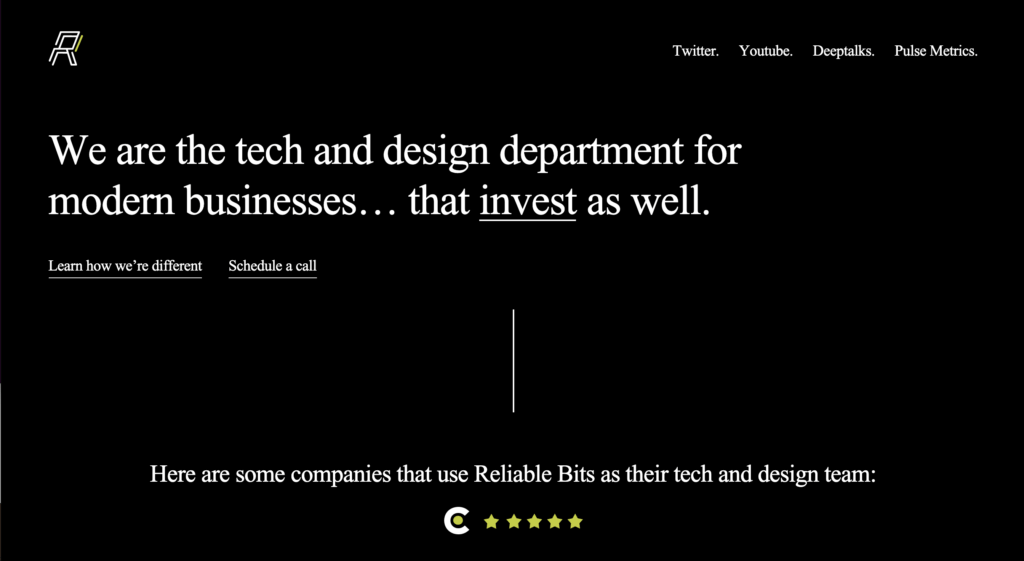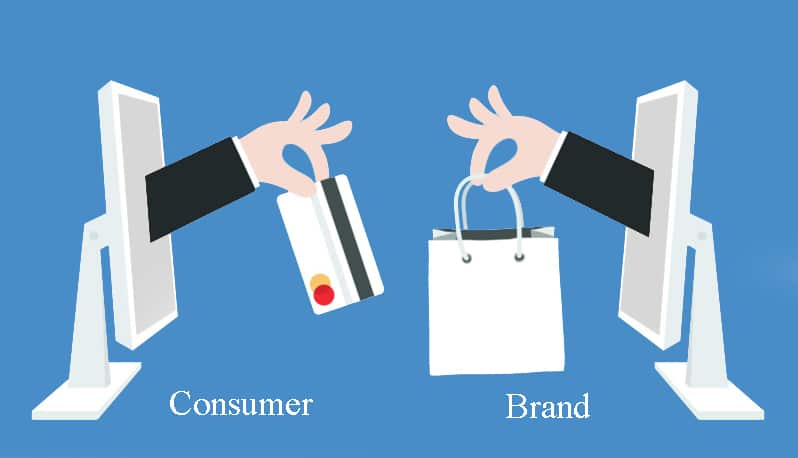Finding the right development partner is an important decision and one that shouldn’t be stressful. I’ve had the experience of trying to find a development partner with my first startup but also had the unique opportunity to work at a leading NYC development agency, then at a startup with it’s own development team, and also as a freelancer.
I often tell potential founders who want to work with Reliable Bits that it’s important to understand the landscape and speak with other companies before deciding on us. Here is a little guide to the design and development landscape and how Reliable Bits is trailblazing a new structure for founders. We’ve broken it down in terms of costs, alignment, and level of service. We hope this guide helps you make your decision.
Reliable Bits

- Costs: Low
$15,000-$50,000+ (typically). Frugal and extremely affordable without compromising on quality. I track our price-to-value ratio religiously and pride in our operations for keeping that ratio super high. I do this by only bringing in senior engineers who can handle multiple parts of the code and I find them in places people normally don’t look. Then I constantly invest in them to upgrade their skill-sets so they stay with us longer & keep getting better.
- Incentives and Alignment: High
I don’t hire coders, I hire passionate computer scientists who have shown interest in different industries. Then I only take a founder’s project if 2-4 folks on my team are super passionate about it, because they will then become your team. They’ll be incentivized with the success of what we build for you. They act as your in-house team without you needing to worry about recruitment, turnover, payroll etc. They’ll sometimes even debate you if we believe a feature is hurting the product. That’s alignment. That’s why several startups literally choose to list us as their CTO’s.
- Level of Service: High
I know you’re probably doing this for the first time and that’s fine. Which is why you get a high amount of hand-holding, guidance, watching your six, preemptively pointing out blindspots that you should be thinking about, and advisory based on our experience helping launch several businesses. We want to build this together. It’s a partnership, not a “vendor-client deal”.
Full Time Employees

- Cost: High
$200,000+. For any tech product you’ll ideally need at least one frontend developer and one backend engineer. If you hire folks with at least some experience they’ll cost at least $100k each. Likely 2-3x more. There’s a lot of demand for high quality engineers so they’re hard to find even at that cost.
- Incentives and Alignment:High.
You’ve hired them yourself so I’m sure you only hired folks you are well-aligned with and who are vested in your idea! This is your in-house team, they should ideally be excited about everything related to your idea.
- Level of Service: High.
As long as you don’t overburden your self-hired team they’ll have the time and energy to be thoughtful about their work, resulting in a high level of service. They are part of the team, they care about your product.
Design and Development Agencies

- Cost: High.
Super expensive, costs can range from $50,000 to $600,000+ for MVP’s (your product’s first version)
- Incentives and Alignment: Low.
Traditional agencies need to meet their high payrolls. So they are incentivized to complete your project as quickly as possible so their team can work on the next project. The more projects they complete, the better their profit.
- This is a revolving door attitude. After they’re done, it’s up to you to figure out how to continue supporting your tech or spend thousands more with them just to support it.
- Designers and Developers do not feel vested in your success because they are constantly moving between multiple projects
- Level of Service: High.
Freelancers

- Cost: Moderate.
$10,000-$80,000+ (typically). The sticker price for freelancers seems lower if you are okay spending all your time doing project management and getting the deliverables completed. You’ll also need to assemble a team of freelancers for design, backend, frontend etc. and make sure they all work with each other.
If work is not managed well or rendered not usable, that’s when you risk losing your investment and cost overruns.
- Incentives and Alignment: Low.
Freelancers may not feel vested in your success because they are constantly moving between multiple projects in order to make a living. If you can pay them a high amounts you can ask them to just work on your project which may help build interest over time. However this is less common.
- Level of Service: Low.
Since you are personally managing individuals all across the globe, you own and run everything. Freelancers may make suggestions but the responsibility is all on you. This results in a lower level of service. We have also seen this result in communication lapses which cause the work to not align with the requirements.
Lot’s of hand-holding, they’ll suggest good practices and guide you based on their experience of working with others who are also used to spending that much money.








Leave a Reply